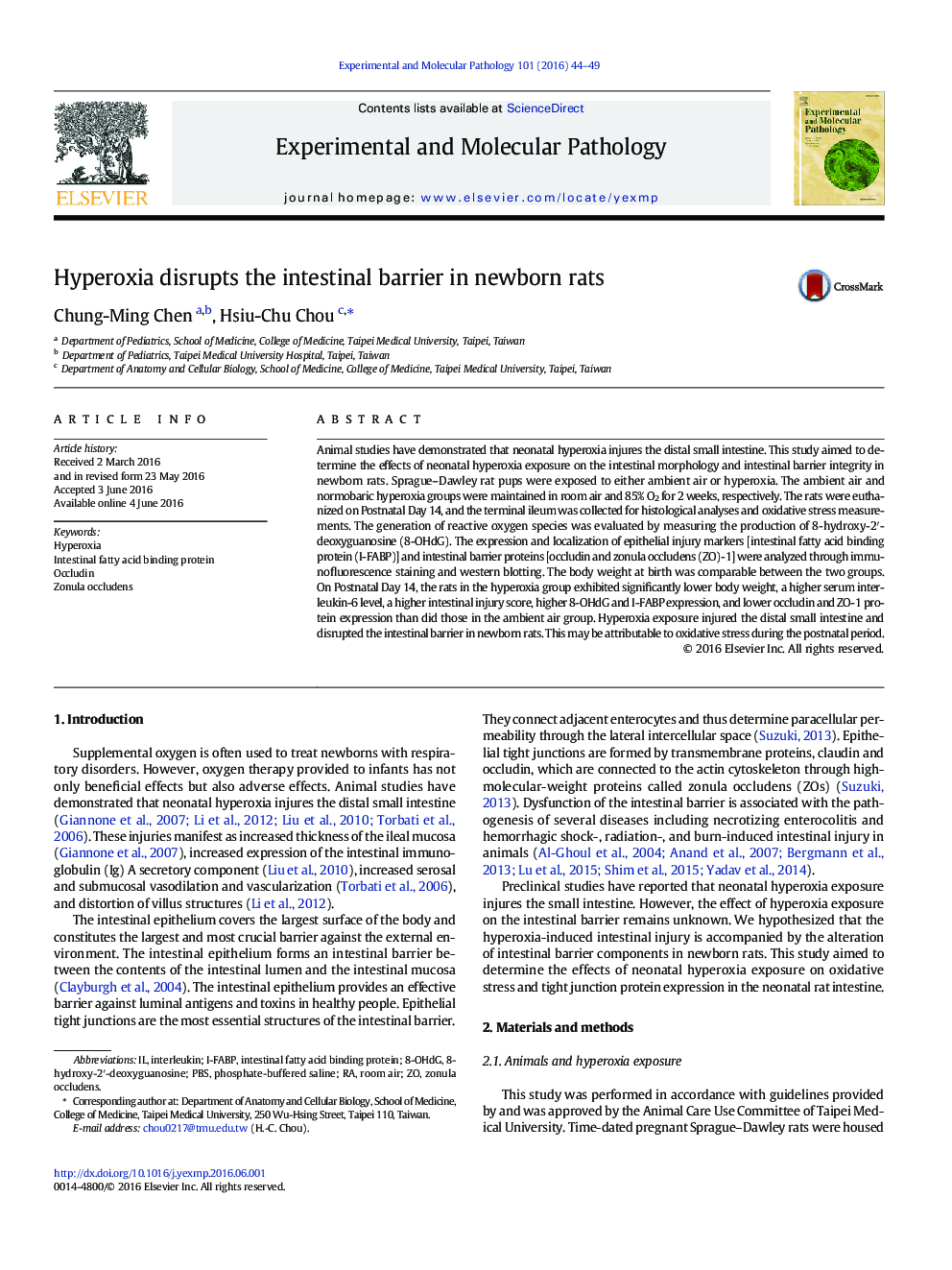| Article ID | Journal | Published Year | Pages | File Type |
|---|---|---|---|---|
| 2774830 | Experimental and Molecular Pathology | 2016 | 6 Pages |
Animal studies have demonstrated that neonatal hyperoxia injures the distal small intestine. This study aimed to determine the effects of neonatal hyperoxia exposure on the intestinal morphology and intestinal barrier integrity in newborn rats. Sprague–Dawley rat pups were exposed to either ambient air or hyperoxia. The ambient air and normobaric hyperoxia groups were maintained in room air and 85% O2 for 2 weeks, respectively. The rats were euthanized on Postnatal Day 14, and the terminal ileum was collected for histological analyses and oxidative stress measurements. The generation of reactive oxygen species was evaluated by measuring the production of 8-hydroxy-2′-deoxyguanosine (8-OHdG). The expression and localization of epithelial injury markers [intestinal fatty acid binding protein (I-FABP)] and intestinal barrier proteins [occludin and zonula occludens (ZO)-1] were analyzed through immunofluorescence staining and western blotting. The body weight at birth was comparable between the two groups. On Postnatal Day 14, the rats in the hyperoxia group exhibited significantly lower body weight, a higher serum interleukin-6 level, a higher intestinal injury score, higher 8-OHdG and I-FABP expression, and lower occludin and ZO-1 protein expression than did those in the ambient air group. Hyperoxia exposure injured the distal small intestine and disrupted the intestinal barrier in newborn rats. This may be attributable to oxidative stress during the postnatal period.
